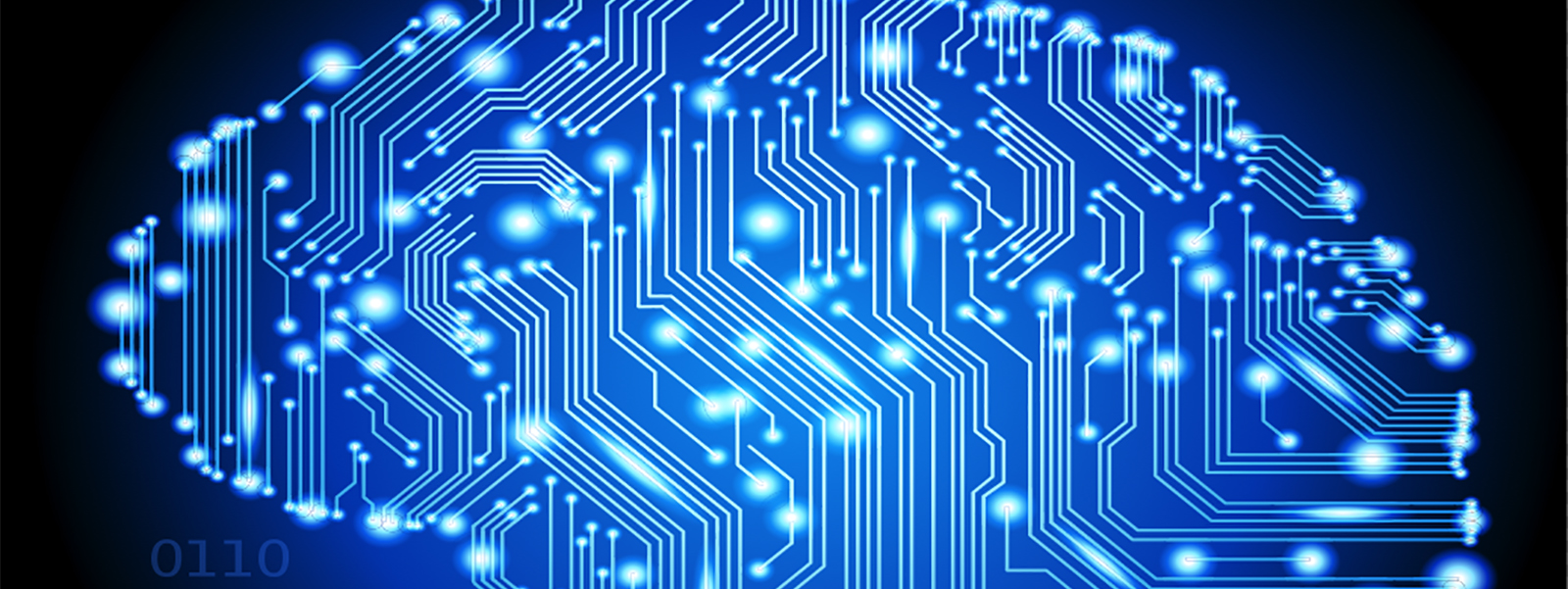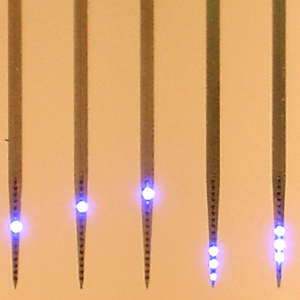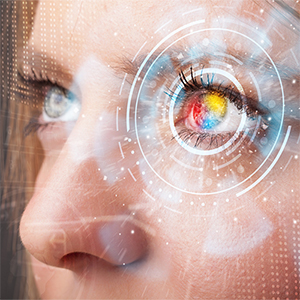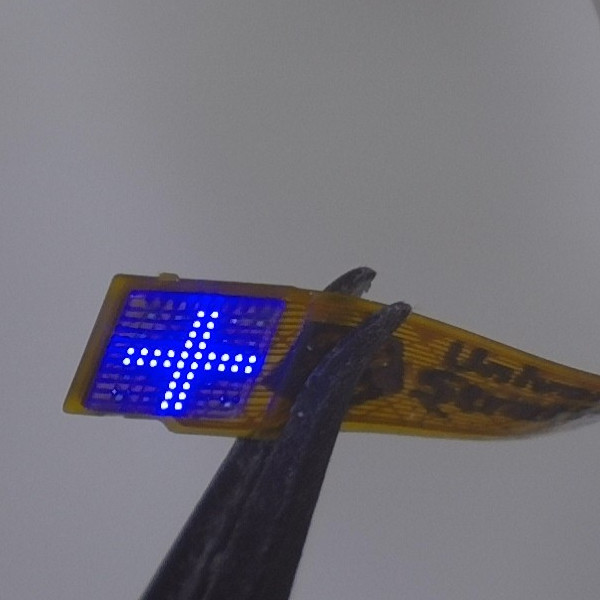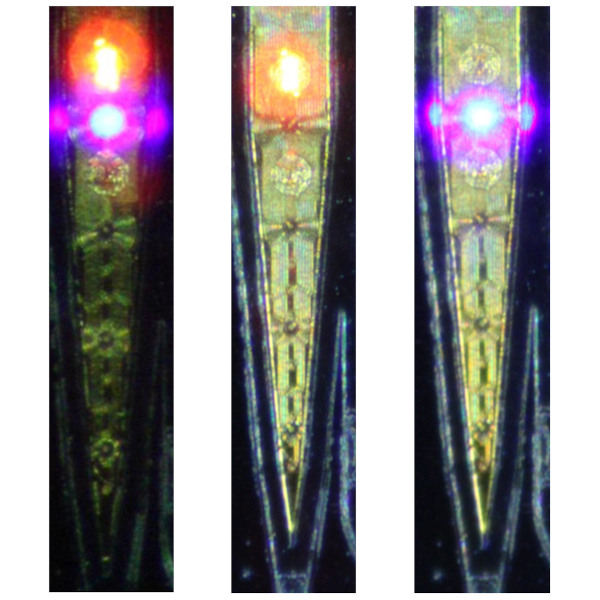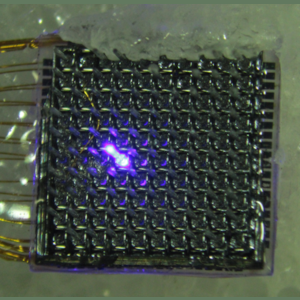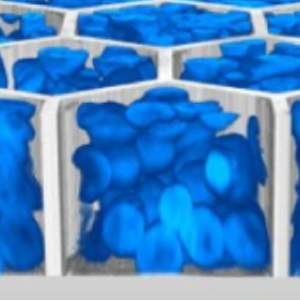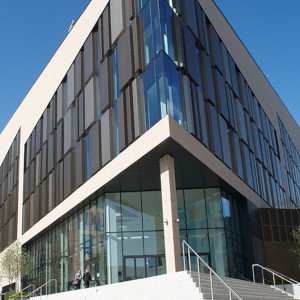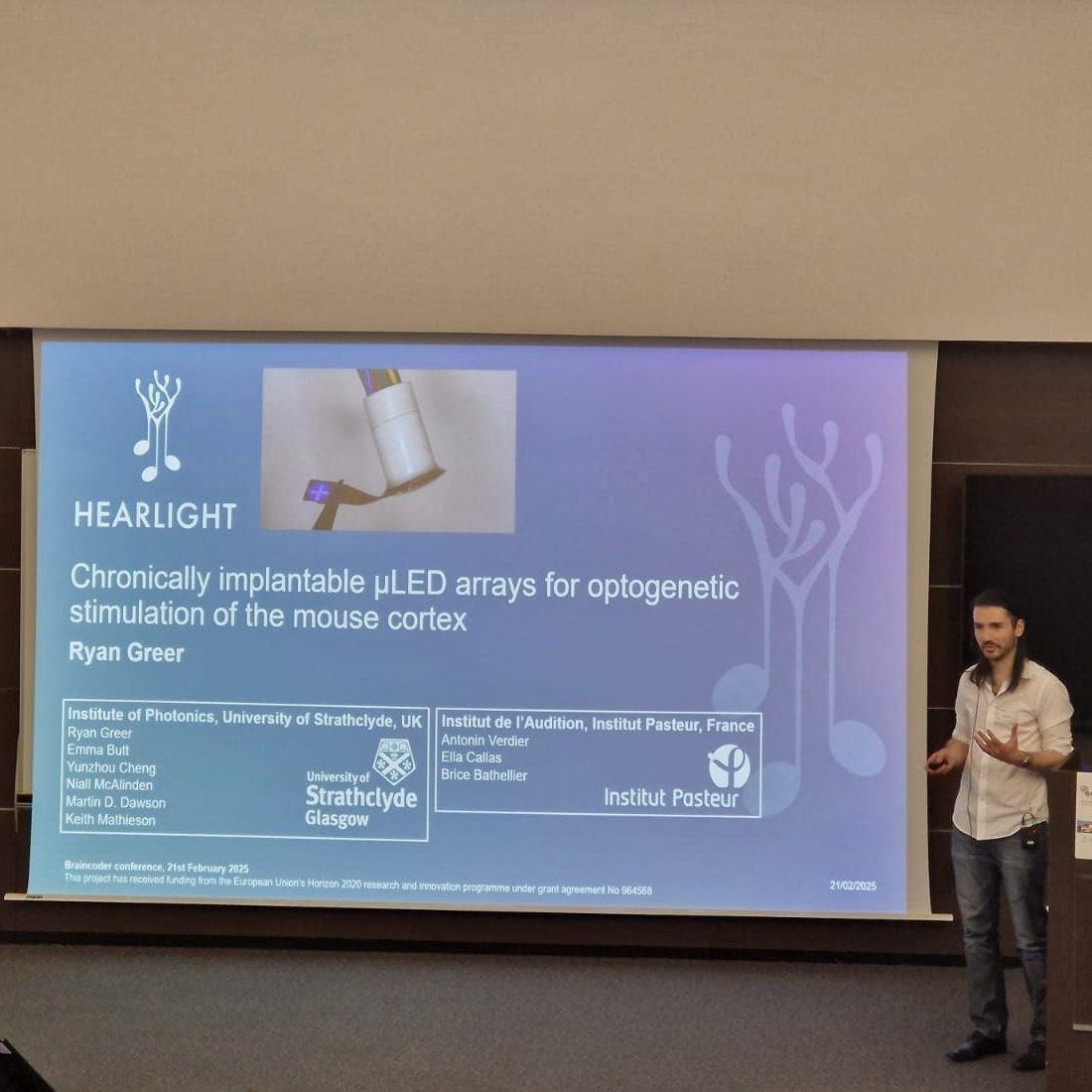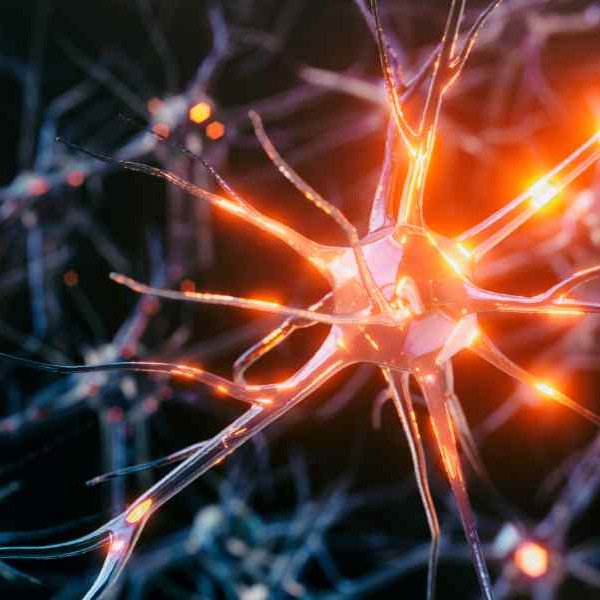The Neurophotonics team develops optoelectronic devices to interface with neural systems in an effort to understand aspects of neural processing. We collaborate closely with leading neuroscientists and develop high-end technology using advanced semiconductor processing techniques.
Current research focuses on the following:
- Technologies for optogenetic control of neural circuits to further our understanding of brain function (see the EU-funded DEEPER consortium) and
- Optoelectronic devices that function as prosthetic devices to restore lost function – for example, our work on retinal prosthetics with Stanford University and our involvement in the EU-funded HearLight project.
The research is underpinned by a 10-year, £2.8M award from the Royal Academy of Engineering through their Chair in Emerging Technologies scheme.
We have a close collaboration with Dr Shuzo Sakata’s neuroscience team, where together we have formed an emerging neurotechnology effort at Strathclyde, that brings together physicists, engineers and neuroscientists to develop new technologies aimed at furthering our understanding of the brain.
